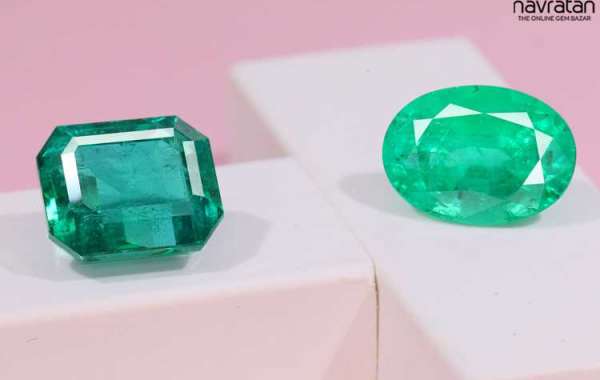Gemstones have long fascinated humanity with their radiant colors, mystical properties, and timeless allure. Among the treasures of the Earth, the emerald stone stands out as a gem of remarkable beauty and significance. Revered for centuries, this verdant gem has captivated hearts, adorned crowns, and inspired legends. In this blog, we will delve into the world of emeralds, exploring their history, characteristics, symbolism, and significance in various cultures.
A Glimpse into History:
Emeralds have a rich and storied history that spans over 4,000 years. Ancient civilizations, such as the Egyptians, Incas, and Aztecs, regarded emeralds as sacred gems, associating them with fertility, rebirth, and prosperity. Cleopatra, the legendary Egyptian queen, had a deep affection for emerald stone and was famously adorned in these vivid green stones. Throughout the ages, emeralds have been sought after by royalty, aristocrats, and connoisseurs of fine jewelry.
Characteristics and Formation:
Emeralds are a variety of the mineral beryl, characterized by their striking green color. The intense green hue is attributed to traces of chromium, vanadium, and iron in the crystal structure. Emeralds are relatively hard but can be brittle due to natural inclusions called "jardin," which resemble a garden of foliage within the stone. These inclusions are considered part of the stone's charm and can help identify natural emeralds from synthetics.
Symbolism and Meanings:
The emerald has garnered numerous symbolic meanings across cultures and time. It is often associated with qualities such as love, fertility, rebirth, and abundance. In ancient folklore, emeralds were believed to possess mystical properties, providing protection against evil spirits, enhancing clairvoyance, and promoting emotional well-being. In modern times, emeralds are often regarded as a symbol of wisdom, harmony, and growth.
Emeralds in Culture and Literature:
The mesmerizing allure of emeralds has inspired countless works of art, literature, and poetry. From famous literary references like the "Emerald Tablet" of Hermes Trismegistus to the fictional emerald city in L. Frank Baum's "The Wizard of Oz," emeralds have captivated the imaginations of storytellers throughout history. They have also held a special place in religious and cultural traditions, adorning talismans, statues, and ceremonial objects.
Healing and Metaphysical Properties:
In addition to their aesthetic appeal, emeralds are believed to possess various healing and metaphysical properties. They are associated with promoting physical vitality, emotional balance, and spiritual growth. It is believed that emeralds can strengthen the heart, soothe the mind, and enhance one's intuition. They are also said to have a calming effect and can aid in relieving stress and anxiety.
Investing in Emeralds:
Emeralds are not only cherished for their beauty but also as valuable investments. The rarity of high-quality emeralds and their enduring popularity make them a desirable asset for collectors and investors. Factors such as color, clarity, and carat weight play a significant role in determining the value of an emerald. However, it is essential to acquire emeralds from reputable sources and seek professional guidance when considering them as an investment.
Conclusion:
The emerald stone continues to capture our fascination with its striking green hue and captivating history. Whether worn as a precious adornment or appreciated for its metaphysical properties, emeralds embody the beauty and wonder of the natural world. From ancient civilizations to modern-day enthusiasts, the emerald's enduring appeal stands as a testament to its timeless charm and significance. So, the next time you catch a glimpse of this alluring gem, take a moment to appreciate the beauty and magic it holds within its verdant depths.








